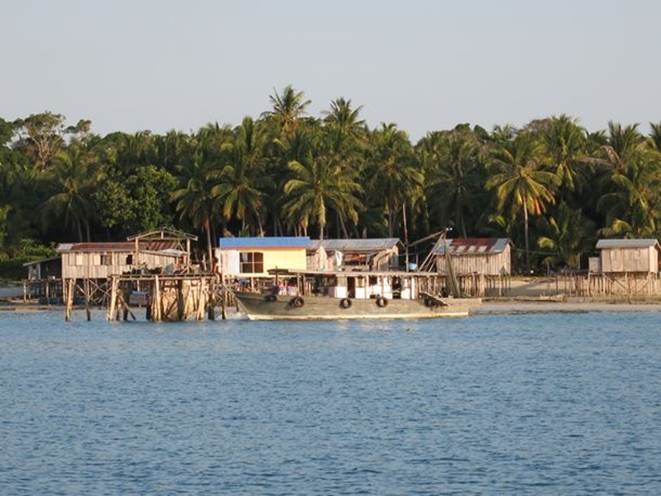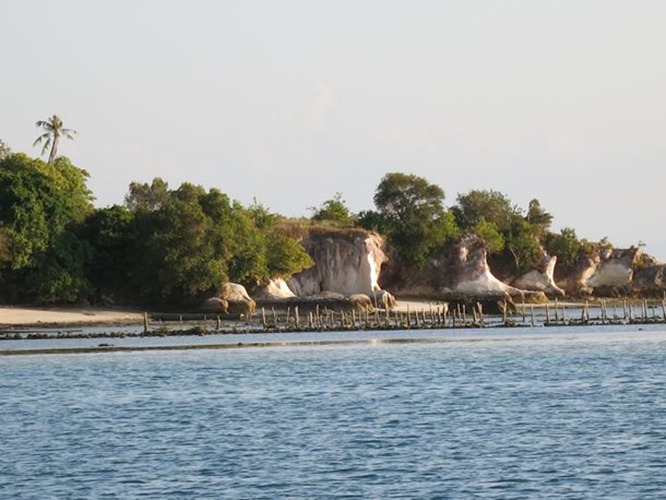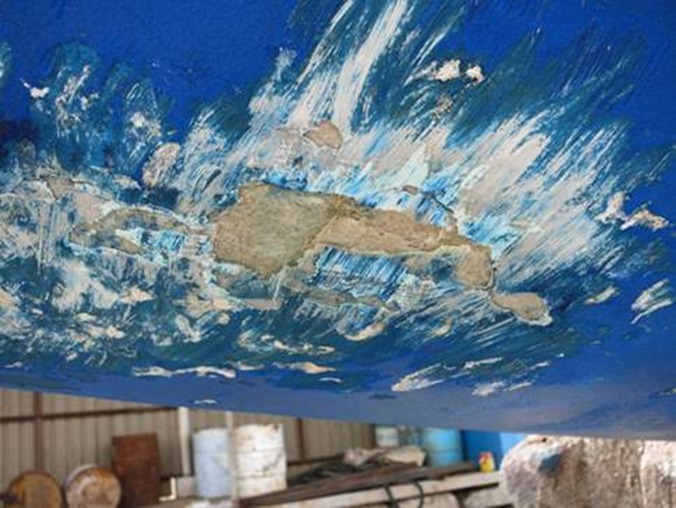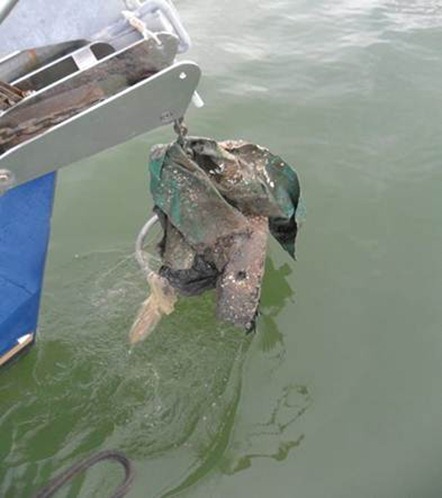Storms, Shipwrecks and Close Shaves N05 50 324 E118 07 497

|
Whilst in the marina in Kota Kinabalu we had a vicious 45 knot squall that lasted a few hours and caused damage to trees around the luxurious hotel there. Another the following day was slightly less intense but these 2 were the forerunner of 2 more that were more damaging for us yachties. We experienced the next 45 knot squall as we rounded the northern tip of Borneo. The wind and rain were so bad that I resorted to my wetsuit whilst keeping watch. There is a narrow channel that we had to go through which I was concerned about as the visibility was reduced by the heavy rain, but as it happened we stormed through doing 8 knots. By the time we reached Kudat the wind had dropped and we were able to find our way into the tiny (and free) marina known as the Duck Pond. However, our friends aboard the only other Brit boat in the rally, Full Flight, were at the same time fighting for their boat and were not far from fighting for their lives. Having gone ashore on the pretty coral island of Mandidarah, the wind had increased from nothing to 40 knots in the space of a few minutes and peaked at 53 knots. By the time they had the dinghy in the water the sea was very rough, so rough that the dinghy flipped depositing them and 2 fellow Ausi yachties into the water. In the meantime all 4 boats in the anchorage were dragging towards the reef where the surf was breaking. By the time Tony and Pat, who are not good swimmers, were able to get to their boat it was already pounding on the reef.
Mandidarah on a calmer day
They ended up sleeping ashore where some locals had taken pity on them and had to leave their boat to its fate. Luck was on their side and returning at first light they were overjoyed to see Full Flight afloat and upright. The wind had dropped and the tide returned to lift them into 6 metres of water. A closer inspection revealed a lot of relatively minor damage. There was a slow leak through some mangled fibreglass in the bow, a bent prop shaft and several inches missing from the bottom of the rudder. However, with constant pumping of the bilge they were able to return to Kudat which by chance has the only travel-lift in the whole of Borneo and they are currently in the throes of arranging repairs.
We can only imagine the trauma that they went through and the effect it will have on their confidence. Every time we leave the boat at anchor we know there is a potential for disaster. We came close to a similar experience in Sandakan. I went ashore to use the faster Wi-Fi in the yacht club and was caught unawares by yet another of these vicious squalls. Concentrating on trying to send an email with a video file for daughter Hattie’s birthday I did not notice the rain start but soon became aware of the wind, which was already rearranging the furniture on the yacht club patio. By then it was too late to return to the boat as the waves were steep and the dinghy would in all likelihood be carried away by the wind. In the meantime Gryphon 2 was dragging, as were a number of other boats in the anchorage. Poor Lorraine was forced to motor into the howling wind and rain with the anchor still down just to keep station and hope that the other boats, one of which was out of control with a rogue plastic back across its engine water intake, were able to keep away. To make matters worse this all happened in the dark. We were lucky and eventually I was able to return to the boat and help a drenched and exhausted Lorraine by which time the worst was over. I kept a nervous anchor watch as we danced round our now apparently set anchor in wind over tide conditions, coming close to one boat and then another. When we retrieved the anchor we realised why it had dragged!
Our anchor complete with car tyre, a plastic sheet and a number of plastic bags. We had expected to experience squalls but the intensity, the suddenness and duration of them has surprised us and other yachties. Whether the energy in these systems has increased due to global warming or these are just natural events triggered by tropical depressions in the Philippines we do not know. They are never forecast, presumably because they are relatively localised events but they can certainly have dramatic impacts. Local yacht club staff and other sea faring folk have told us that these ferocious squalls are unusual so we are hoping they won’t persist. As is so often the case it is definitely better to have plenty of sea room and not be trapped in a tight anchorage. |



